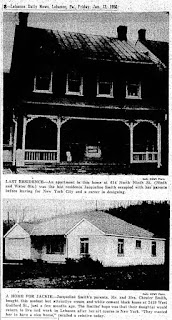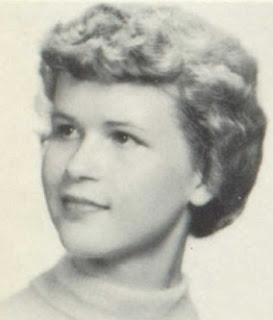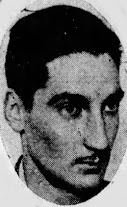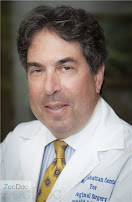Jackie Smith's hometown paper covered the story of her life, her disappearance, the discovery of her criminal abortion death, and the resulting trial in excruciating detail. Here are many photos, along with details about Jackie.
 When word first arose of the young woman's disappearance, her high school English teacher, Joan Nichols, asked the class to pray for Jackie.
When word first arose of the young woman's disappearance, her high school English teacher, Joan Nichols, asked the class to pray for Jackie.
Miss Nichols found Jackie to be "well-liked" and "even tempered" and as the best dressed girl in her class.
After Jackie had moved away, Miss Nichols even contacted her in New York and asked her to produce a series of illustrations of various figures of speech for a Shakespeare class. Jackie sent her former teacher a series of posters.
Jackie also sent Miss Nichols a letter in which she said:

Don't ask me how, but some way I found time to read a book I know you would enjoy if you haven't already read it -- 'A Man Called Peter,' about Peter Marshall, chaplain of the Senate until his death several years ago, written by his widow. Many of his sermons and prayers are in the book, and I found them very inspiring. I have never been a regular church goer, but up hear I have started -- rather odd, I suppose, since you usually associate New York City with quite different ways. ....
You wouldn't recognize me today. I got a short haircut. It gets so dirty around the city, and mine was too long to bother with (there goes my English again).
Jackie's art teacher, Julia Weirman, found Jackie to be clever and imaginative. She had recommended Jackie to the local Textile Printing and Finishing Company for a job. Jackie's boss there was pleased with the referral. Jackie had prepared textile designs for the company for about a year and a half after she graduated. "She was a nice, quiet girl. I can only say good of her. None come better," he told the Lebanon Daily News.
Jackie was very active in her high school. She was a member of the poetry club, posed as a model for art class, and participated in the school fashion show. She was a member of the Student Senate.
Jackie was known for being fashionable, poised, and ambitious. She was also characterized as quiet and reserved. She had no close friends and never dated.
Jackie's hometown newspaper shared three poems she had published in What Hath Thought Wrought?, the annual publication of the school's Pegasus poetry club.

Mental Meandering
With spring that compelling urge comes back
To stray far away from my native lair,
To hear a train skim over a track,
Or the whir of propellors slicing the air.
To cross the seas on an ocean liner,
To London, Paris, Lisbon and Rome;
Right now I can't think of anything finer
Than going as far as I can from my home.
The lure of the unknown has my hand,
The unknown, as full of mystery,
Strange people in a distant land,
About which I read in history.
Oh well, I know these dreams will be past,
And I'll be content to loll on a beach
When spring to summer turns at last
And I I want is within my reach.
Ode To a TV Set
TV, you wicked little monster,
You try so hard to be a funster.
People once passed the time of day
With books and records, work and play;
But since you've taken over the house
I must be quieter than a mouse.
My, I wonder how the daylight looks
And if publishers still print in books.
Because of you I've lost all my friends;
I watch Berle, who to culture nothing lends.
TV, from your silly witticisms,
From puppets and movies, I can't tear away --
You little monster, you're here to stay.
From a Flat-Footed Fullback
Will you love me and remember
In the merry month of May
As you did darling in November
When I ran that touchdown play?
Or have you already forgotten the story?
Is your fancy about to swing --
To the dope who wins the glory
At the track meets in the spring?

Jackie lived with her parents, Chester and Josephine, in an apartment at the corner of Ninth St. and Walter St. in Lebanon, Pennsylvania. Her father spoke proudly of how she was saving her money from her job to pay for art school. Jackie's uncle, Carl Gable, said, "She really had a wonderful family life. Their life was completely wrapped up in Jackie. I always said she was the only one who could go to high school in a cashmere sweater."
Since childhood Jackie had collected dolls, leaving the collection in her parents' care when she went to New York. She had always planned to be an artist, and her parents saved all of her artwork, from her first crayon drawings to her mature works.
After Jackie went to New York to attend art school, her parents bought a small ranch home with the idea that Jackie would move back home and work locally. Chester Smith visited Jackie often in New York. She was planning to marry her new love, Tom Daniel. Jackie bought utensils and other household goods for a "hope chest" in anticipation of setting up a home with Daniel. Chester would bring the items home and stash them for his daughter.
Jackie's uncle said that Chester and XXX invited him to join Jackie in a Christmas visit home. Jackie, they said, wrote back to say that she and Tom had made other plans but hoped that her parents could join them in New York after the holidays.

Jackie's mother faced an additional tragedy in the death of her father, John Gable, shortly after Jackie's death. She was so distraught that she was unable to attend her father's viewing or funeral.
The family doctor, Harold Krohn, made house calls to the Smith home. He cared for Mrs. Smith, who was kept sedated in her bed.
When leaving for New York to follow the investigation into his daughter's death, Chester Smith reached out to Rev. Alden G. Biely, pastor of the Hebron EUB Church where Jackie's family sometimes attended. At Chester's request, Rev. Biely and his wife, looked after the distraught Mrs. Smith. The couple stayed at the Smith home while Chester was away.
























